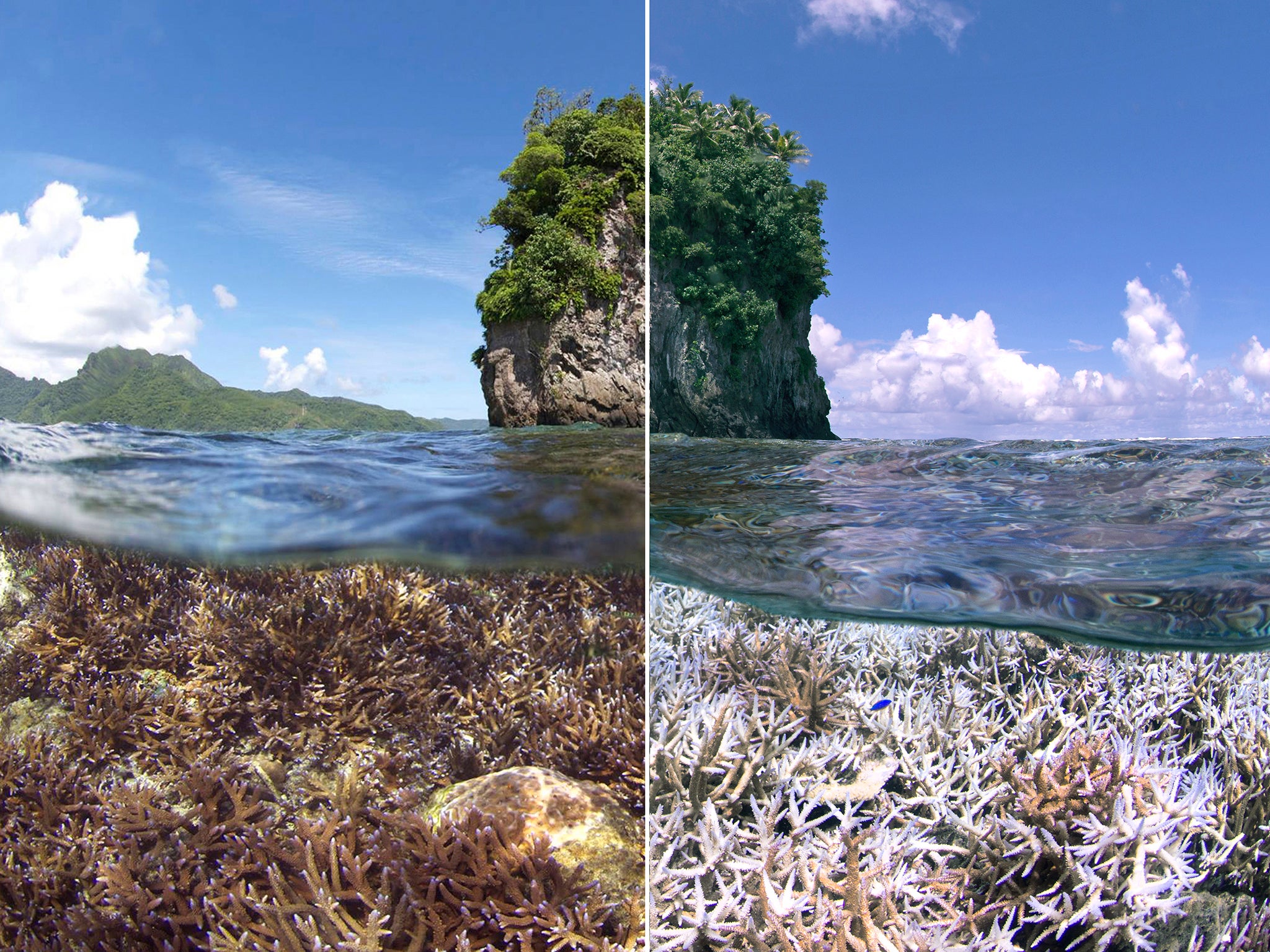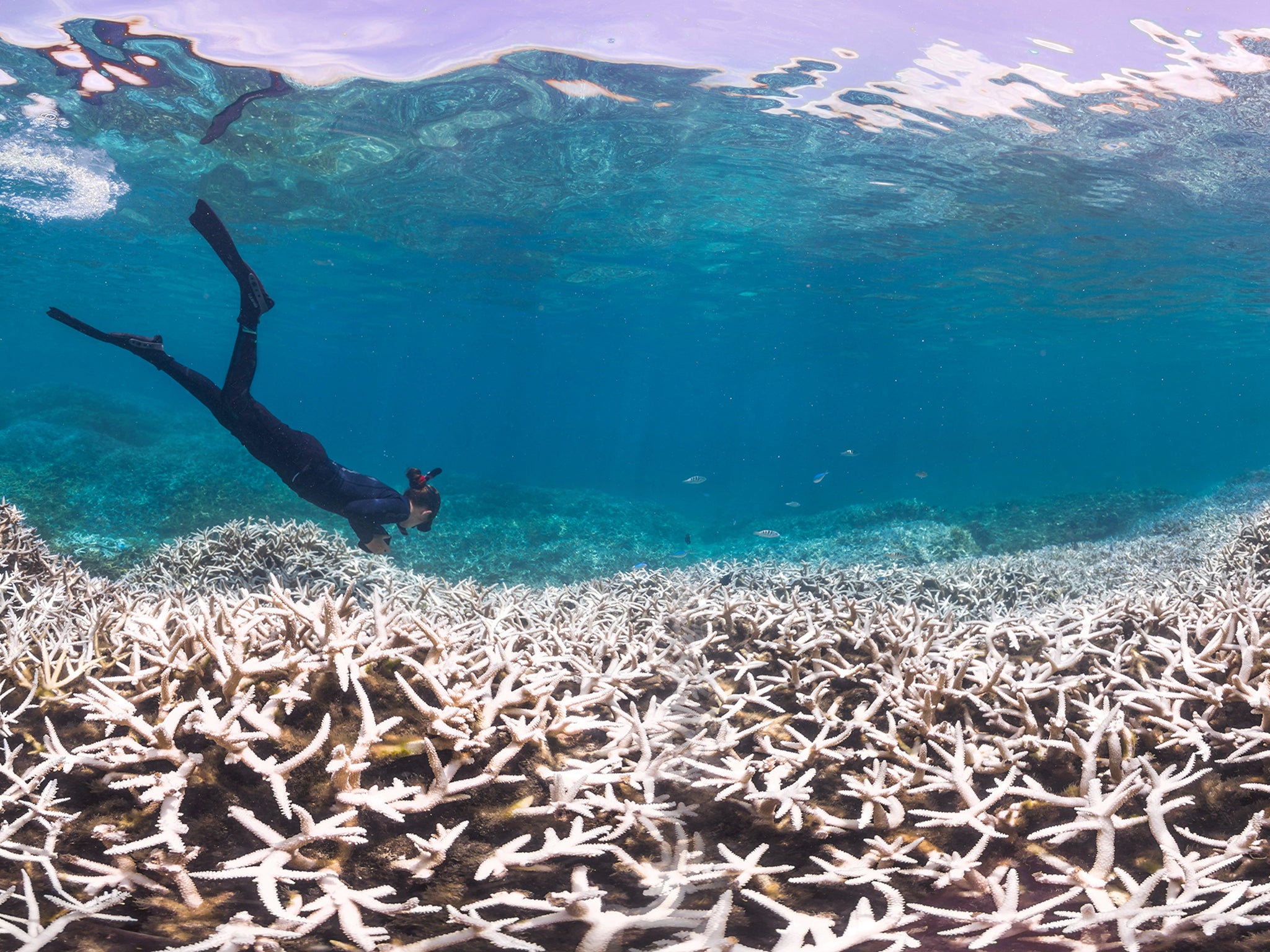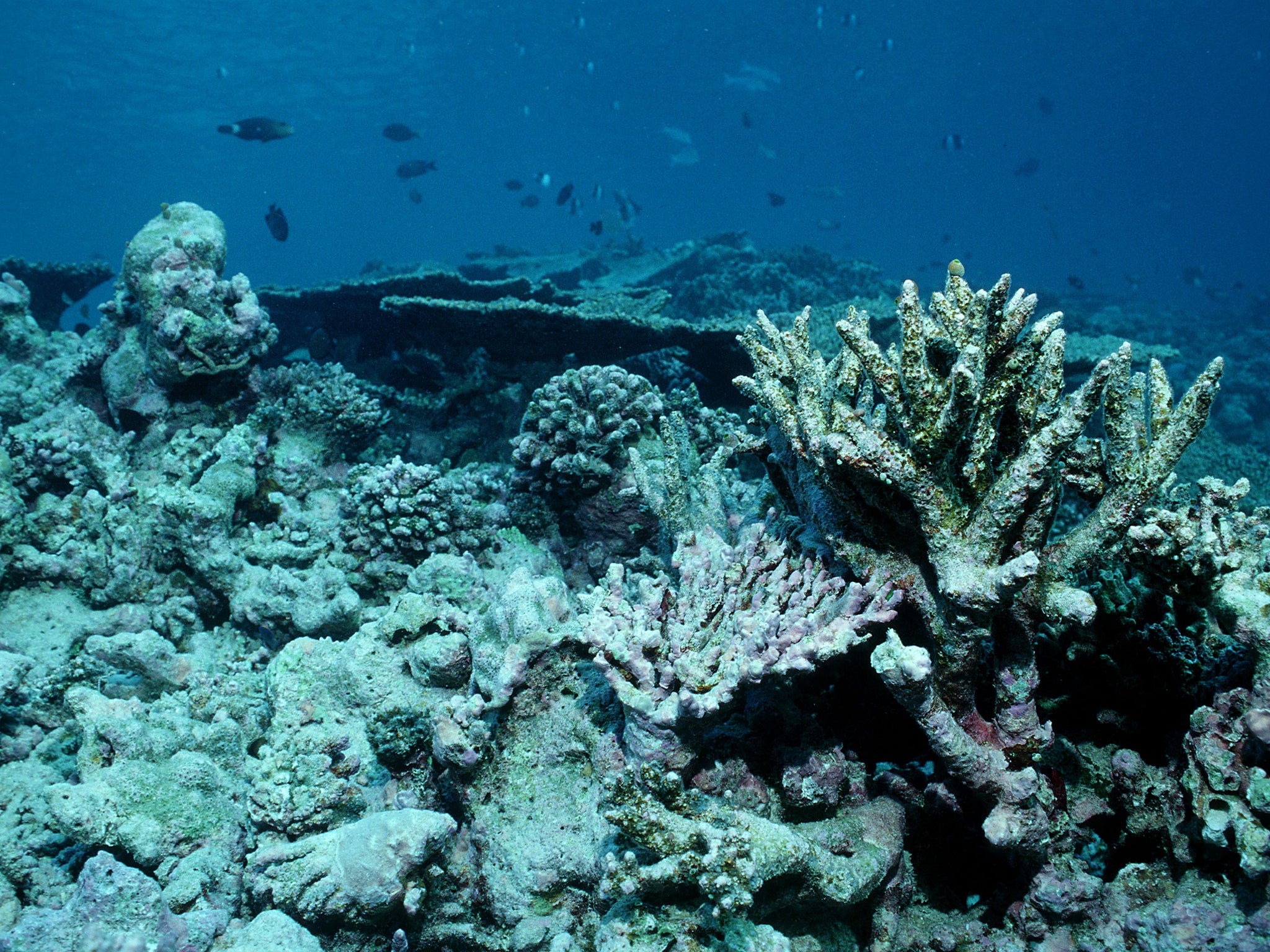A rare phenomenon could wipe out swathes of the world's coral reefs
The strenghening El Nino could make things even worse

For just the third time on record, scientists say they are now watching the unfolding of a massive worldwide coral bleaching event, spanning the globe from Hawaii to the Indian Ocean. And they fear that thanks to warm sea temperatures, the ultimate result could be the loss of more than 12,000 square kilometers, or over 4,500 square miles, of coral this year — with particularly strong impacts in Hawaii and other U.S. tropical regions, and potentially continuing into 2016.
The event is being brought on by a combination of global warming, a very strong El Nino event, and the so-called warm “blob” in the Pacific Ocean, say the researchers, part of a consortium including the National Oceanic and Atmospheric Administration as well as XL Catlin Seaview Survey, The University of Queensland in Australia, and Reef Check.
“This is only the third time we’ve seen what we would refer to as a global bleaching event, an event that causes mass bleaching in the Indian Ocean, the Pacific Ocean, and the Atlantic-Caribbean basin,” said Mark Eakin, who heads NOAA’s Coral Reef Watch. The prior events, Eakin continues, “were in 1998 and 2010, and those were pretty much one year events. We’re looking at a similar spatial scale of bleaching across the globe, but spanning across at least 2 years. So that means a lot of these corals are being put under really prolonged stress, or are being hit 2 years in a row.”

The total loss could amount to 5 percent of the world’s corals in 2015, according to Eakin. That’s not as bad as the loss in 1998, but there’s a fear that if the event continues into 2016, the losses would grow.
“We’ve been hearing worrying reports of bleaching from various places, and now the bad news is officially here, with worse news likely yet to come with the strengthening El Nino,” says Nancy Knowlton, an expert on coral reefs with the Smithsonian Institution, of the news. “No reefs that experience unusually warm waters are likely to escape unscathed, but reefs already suffering from overfishing and pollution may have a particularly rough time recovering, based on what we have learned from past bleaching events.”
Coral bleaching occurs when warm ocean waters — considerably warmer than corals evolved to live with for an extended period of time — leave the organisms stressed and cause them to banish the symbiotic algae that provide corals with both their color and also nutrients. Without them, corals turn white, and become very vulnerable — thus, following bleaching, coral die-off can occur. How much coral death happens depends on how much temperature stress the corals actually experience, and how prolonged it is.
The current bleaching event began in 2014, where it was observed in Guam and the Northern Mariana Islands. These areas experienced “the highest thermal stress we’ve ever seen,” said Eakin. Then it spread across the Pacific to Hawaii, which is at particular risk right now, along with many areas in the Caribbean. Major bleaching has also been observed in the Indian Ocean.
According to NOAA, 95 percent of all U.S. coral reefs are expected to see ocean temperatures that can lead to bleaching sometime this year. Of those areas, says Eakin, 60 percent are expected to be “hit with severe thermal stress and we’re going to see a lot of corals dying.”
NOAA models predicted the global bleaching event during the summer — further confirmation came from observations in the field by organizations like the XL Catlin Seaview Survey, which organizes expeditions around the world to observe the state of corals, and Reef Check, which coordinates and crowd-sources citizen scientist reports from reef areas.
The first globally observed coral bleaching event occurred in 1998, during the last very strong El Nino event — when it happened, scientists had never seen anything like it.
“This 1998 event caught us all by surprise,” says Ove Hoegh-Guldberg, who directs the Global Change Institute at the University of Queensland and is also chief scientist at the XL Catlin Seaview Survey. At the same time, though, the event “really proved that the ability to measure temperature from space could predict where and when bleaching was going to occur, and as we found out later on, how intense it was going to be.” That’s because the phenomenon of coral bleaching is so closely connected to temperature.

Indeed, because of this relationship, scientists can now use computer models to predict coral bleaching events ahead of time. “If you’re 1 degree [Celsius] warmer than your long term summer temperature for about 4 to 6 weeks, you’ll find the first sign of bleaching,” says Hoegh-Guldberg.
Coral reefs comprise less than .1 percent of the ocean’s total area. But they’re vitally important both to ecosystems and to people who depend on them. “One in every four species of fish live on a coral reef, there are over a million species that live on coral reefs, at least two-thirds of them are pretty unknown to science,” says Hoegh-Guldberg. “Coral reefs provide food and livelihood to 500 million people.”
“Coral reefs are the underwater equivalent of rainforests, and by removing the corals, you remove the trees of that underwater world,” adds Richard Vevers, head of the XL Catlin Seaview Survey.
Unfortunately, as the planet’s oceans continue to absorb the bulk of the extra heat that is being contributed by global warming, the outlook for corals isn’t good. Already half of the world’s reefs have already been lost due to causes ranging from bleaching to pollution in the last 50 years, according to Eakin.
And a staccato of scientific studies have predicted continual decline of corals as warming ticks upward, one of them led by Hoegh-Guldberg in 2007. That report found that over the course of this century, as warming continues, “corals becoming increasingly rare on reef systems.”

And once corals die, the consequences are not easily reversible. “At best, you’re talking about a recovery time of 10 to 20 years,” says NOAA’s Eakin. “And most of these places are getting hit once every 5 years.” Some of the corals killed off can be several hundred years old.
One estimate valued the U.S.’s coral reefs alone at $ 2.4 billion per year, when taking into account the tourism and other economic benefits they provide.
“Local protection coupled with more serious efforts to reduce carbon dioxide emissions are needed if we want coral reefs to be part of our future,” says the Smithsonian’s Knowlton.
© Washington Post
Join our commenting forum
Join thought-provoking conversations, follow other Independent readers and see their replies
Comments